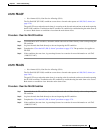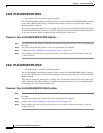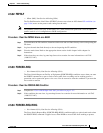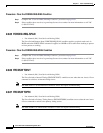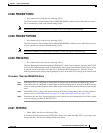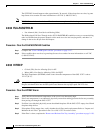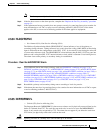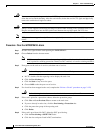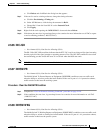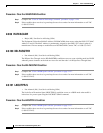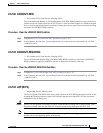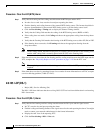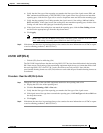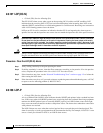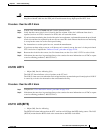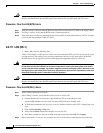
2-75
Cisco ONS 15327 Troubleshooting Guide, R3.4
March 2004
Chapter 2 Alarm Troubleshooting
Alarm Procedures
c. Click Delete and click Yes in the dialog box that appears.
Step 7 If the card is used as a timing reference, change the timing reference:
a. Click the Provisioning > Timing tabs.
b. Under NE Reference, click the drop-down menu for Ref-1.
c. Change Ref-1 from the listed OC-N card to Internal Clock.
d. Click Apply.
Step 8 Right-click the card reporting the IMPROPRMVL alarm and choose Delete.
Step 9 If the alarm does not clear, log onto http://www.cisco.com/tac for more information or call TAC to report
a service-affecting problem (1-800-553-2447).
2.6.96 INC-ISD
• Not Alarmed (NA), Non-Service Affecting (NSA)
The DS-3 Idle (INC-ISD) condition indicates that the XTC-28-3 card is receiving an idle signal, meaning
that the payload of the signal contains a repeating pattern of bits. The INC-ISD condition occurs when
the transmitting port has an OO-MT state. It is resolved when the OOS state ends.
Note INC-ISD is a condition and not an alarm. It is for information only and does not require troubleshooting.
2.6.97 INHSWPR
• Not Alarmed (NA), Non-Service Affecting (NSA)
The Inhibit Switch To Protect Request on Equipment (INHSWPR) condition occurs on traffic cards
when the ability to switch to protect has been disabled. If the card is part of a 1+1 protection scheme,
traffic remains locked onto the working system.
Procedure: Clear the INHSWPR Condition
Step 1 Complete the “Clear an External Switching Command” procedure on page 2-128.
Step 2 If the condition does not clear, log onto http://www.cisco.com/tac for more information or call TAC
(1-800-553-2447).
2.6.98 INHSWWKG
• Not Alarmed (NA), Non-Service Affecting (NSA)
The Inhibit Switch To Working Request on Equipment (INHSWWKG) condition occurs on traffic cards
when the ability to switch to working has been disabled. If the card is part of a 1+1 protection scheme,
traffic remains locked onto the protect system.



